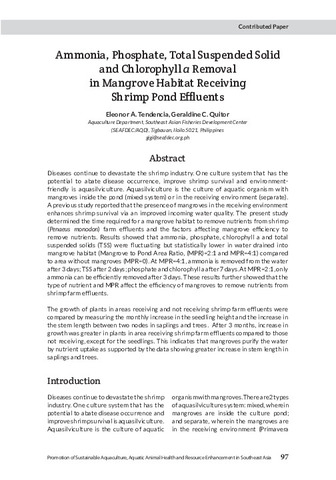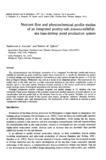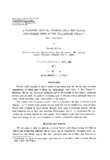Ammonia, phosphate, total suspended solid and chlorophyll a removal in mangrove habitat receiving shrimp pond effluents
- Global styles
- MLA
- Vancouver
- Elsevier - Harvard
- APA
- Help
Share
抄録
Diseases continue to devastate the shrimp industry. One culture system that has the potential to abate disease occurrence, improve shrimp survival and environmentfriendly is aquasilviculture. Aquasilviculture is the culture of aquatic organism with mangroves inside the pond (mixed system) or in the receiving environment (separate). A previous study reported that the presence of mangroves in the receiving environment enhances shrimp survival via an improved incoming water quality. The present study determined the time required for a mangrove habitat to remove nutrients from shrimp (Penaeus monodon) farm effluents and the factors affecting mangrove efficiency to remove nutrients. Results showed that ammonia, phosphate, chlorophyll a and total suspended solids (TSS) were fluctuating but statistically lower in water drained into mangrove habitat (Mangrove to Pond Area Ratio, (MPR)=2:1 and MPR=4:1) compared to area without mangroves (MPR=0). At MPR=4:1, ammonia is removed from the water after 3 days; TSS after 2 days; phosphate and chlorophyll a after 7 days. At MPR=2:1, only ammonia can be efficiently removed after 3 days. These results further showed that the type of nutrient and MPR affect the efficiency of mangroves to remove nutrients from shrimp farm effluents.
The growth of plants in areas receiving and not receiving shrimp farm effluents were compared by measuring the monthly increase in the seedling height and the increase in the stem length between two nodes in saplings and trees. After 3 months, increase in growth was greater in plants in area receiving shrimp farm effluents compared to those not receiving, except for the seedlings. This indicates that mangroves purify the water by nutrient uptake as supported by the data showing greater increase in stem length in saplings and trees.
Suggested Citation
Tendencia, E. A., & Quitor, G. C. (2021). Ammonia, phosphate, total suspended solid and chlorophyll a removal in mangrove habitat receiving shrimp pond effluents. In F. A. Aya, L. D. de la Peña, N. D. Salayo, & E. A. Tendencia (Eds.), Proceedings of the International Workshop on the Promotion of Sustainable Aquaculture, Aquatic Animal Health, and Resource Enhancement in Southeast Asia (pp. 97–106). Tigbauan, Iloilo, Philippines: Aquaculture Department, Southeast Asian Fisheries Development Center.
Type
Conference paperISBN
9789719931102 (Print); 9789719931119 (PDF)
Except where otherwise noted, this item's license is described as Attribution-NonCommercial-ShareAlike 3.0 IGO
Related items
Showing items related by title, author, creator and subject.
-
Asian shrimp situation
Carreon-Lagoc, Julia; Southeast Asian Fisheries Development Center, Aquaculture Department (Aquaculture Department, Southeast Asian Fisheries Development Center, 1990) -
Nutrient flow and physicochemical profile studies of an integrated poultry-salt-Artemia-milkfish-sea bass-shrimp pond production system
Jumalon, Nepheronia A.; Ogburn, Damian M. (Wetteren, Belgium: Universal Press, 1987)The physicochemical and biological parameters of an integrated flow-through poultry-salt-Artemia-milkfish-sea bass-shrimp pond production system were monitored for 6 months to determine the pattern of nutrient changes and ... -
A further note to “fishing gear for prawn and shrimp used in the Philippines today”
Motoh, Hiroshi (Carcinological Society of Japan, 1983)Motoh (1980) reported 9 and 13 kinds of shrimping gear for the fry and the adult respectively, of which most of them are indigenously used today in the Philippines. Howerver, druing the continued ecological survey of ...








